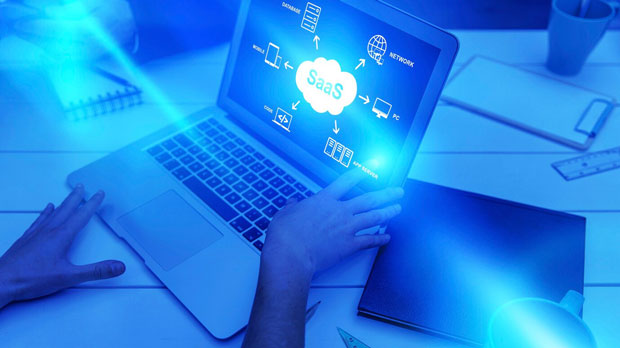When it comes to selecting an HTTP proxy for browsing or accessing content, users often prioritize speed, reliability, and ease of use. Among the many options available, PYPROXY and Tamilblasters Proxy are two commonly discussed services. In this article, we will explore and compare the performance and user experience of these two proxies, focusing on which one provides smoother operation. By analyzing their features, speed, and overall performance, we aim to provide practical insights for users seeking a better browsing experience. Introduction to HTTP ProxiesBefore diving into the specifics of PyProxy and Tamilblasters Proxy, it is important to understand what HTTP proxies are and how they work. An HTTP proxy acts as an intermediary between the user’s device and the internet. It routes the user’s requests to websites and servers, helping to mask their IP address, enhance privacy, or bypass geo-restrictions. Essentially, it allows users to access content that might be restricted in certain locations or maintain anonymity while surfing the web. PyProxy OverviewPyProxy is known for its ease of use and customization options. It is designed with users in mind who need a versatile, reliable proxy to access content online. The proxy is primarily used for general web browsing, data scraping, or hiding the user's real IP address. Key Features of PyProxy1. Customizable Settings: PyProxy allows users to adjust various settings to suit their needs. It offers an easy-to-use interface that supports quick setup and configuration for both beginners and advanced users.2. Speed and Performance: PyProxy ensures low-latency connections, making it suitable for tasks like video streaming or real-time data scraping. The proxy provides stable connections, although its performance can vary based on the location of the server used.3. Compatibility: PyProxy works well across different platforms and browsers, ensuring that users can access it from their preferred device. Whether you are on a desktop, laptop, or mobile device, PyProxy aims to provide seamless compatibility.4. Reliability: While PyProxy is generally reliable, users may occasionally experience slowdowns during peak usage times. This is often due to network congestion or server overload, common challenges with many proxies. Tamilblasters Proxy OverviewTamilblasters Proxy, on the other hand, is often used by people looking to access content related to Tamil movies, shows, and other regional content. It serves a niche market but is widely regarded for its fast speeds and specialized features tailored to streaming. Key Features of Tamilblasters Proxy1. Content Optimization for Streaming: Tamilblasters Proxy is optimized for high-speed content streaming, especially for media files. This makes it a popular choice for users who prioritize uninterrupted video watching.2. Fast Performance: One of the standout features of Tamilblasters Proxy is its speed. It provides a reliable and smooth browsing experience, particularly when accessing media content. This makes it an attractive choice for users who enjoy watching movies or live events without buffering delays.3. Dedicated Servers: Tamilblasters Proxy offers dedicated servers that enhance its performance, especially in handling large traffic loads. This is a significant advantage for users looking for quick access without the usual slowdowns.4. Restricted Access: However, Tamilblasters Proxy tends to be more limited in scope compared to PyProxy. While it excels in streaming, it may not offer the same level of flexibility for other tasks such as data scraping or anonymous browsing. Comparing PyProxy and Tamilblasters Proxy: A Detailed AnalysisNow that we have outlined the features of both proxies, let's compare their performance and user experience more closely. 1. Speed and PerformanceIn terms of raw speed, Tamilblasters Proxy has a clear advantage for streaming and media-related tasks. Its servers are specifically designed for fast data transfer, which is essential for smooth video playback without buffering. PyProxy, while reliable, can sometimes experience slight delays, especially during peak hours when the server is under heavy traffic. For users who need high-speed performance for tasks like video streaming, Tamilblasters Proxy will likely offer a smoother experience. 2. Versatility and CustomizationPyProxy excels in versatility. Its broad range of customization options allows users to tailor the proxy settings to meet their specific needs, whether for anonymous browsing or accessing a variety of content types. Tamilblasters Proxy, in contrast, is more specialized and focused primarily on media access. While it is excellent for streaming, it does not offer the same level of versatility as PyProxy for other use cases. 3. Compatibility and User InterfaceBoth PyProxy and Tamilblasters Proxy are compatible with a wide range of devices and platforms. PyProxy stands out in terms of its user-friendly interface, which allows even beginners to configure and use the service effectively. Tamilblasters Proxy, on the other hand, might require more technical know-how, especially if users want to adjust server settings for specific needs. 4. Security and PrivacyWhen it comes to privacy, both proxies offer secure connections, but their approaches differ. PyProxy allows users to maintain anonymity by hiding their IP address and encrypting internet traffic. Tamilblasters Proxy is primarily focused on speed and media access, but it also offers encryption to safeguard user privacy during browsing. However, PyProxy may provide more robust security features for users who prioritize anonymity and data protection. 5. Reliability and UptimePyProxy generally performs well in terms of uptime and reliability, but like any other service, it is susceptible to occasional slowdowns during periods of high usage. Tamilblasters Proxy, with its dedicated servers, tends to offer more consistent performance, especially during peak traffic times. For users who need guaranteed performance, Tamilblasters Proxy may be the better choice for uninterrupted browsing or media streaming. Conclusion: Which Proxy is Better for You?The choice between PyProxy and Tamilblasters Proxy ultimately depends on your specific needs and usage patterns.- If you prioritize speed for streaming and accessing media content, Tamilblasters Proxy will likely provide a smoother, faster experience.- If you need a versatile proxy for tasks like web browsing, data scraping, or accessing various types of content while ensuring anonymity, PyProxy is a better choice due to its customization options and broader compatibility.Both proxies offer valuable services, but for users who need a more tailored, multi-functional proxy experience, PyProxy stands out as the more flexible option. Meanwhile, Tamilblasters Proxy excels for those who are mainly focused on seamless media streaming.Choosing the right proxy depends on your primary usage. While Tamilblasters Proxy offers specialized speed and reliability for media access, PyProxy provides a versatile and customizable solution for a wide range of internet activities. By considering your specific needs, you can select the proxy that delivers the best overall performance and experience for you.
Oct 30, 2025

































































